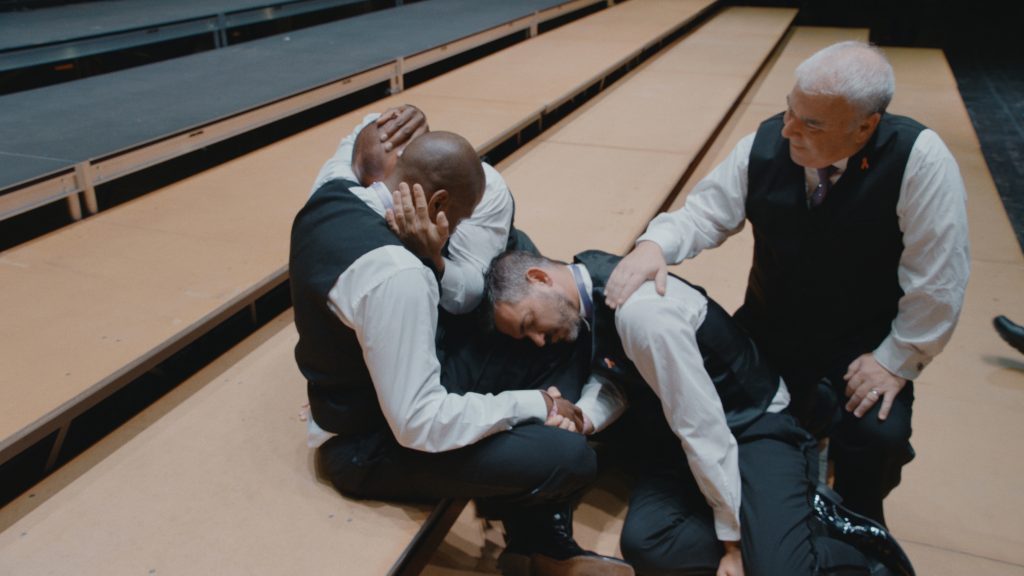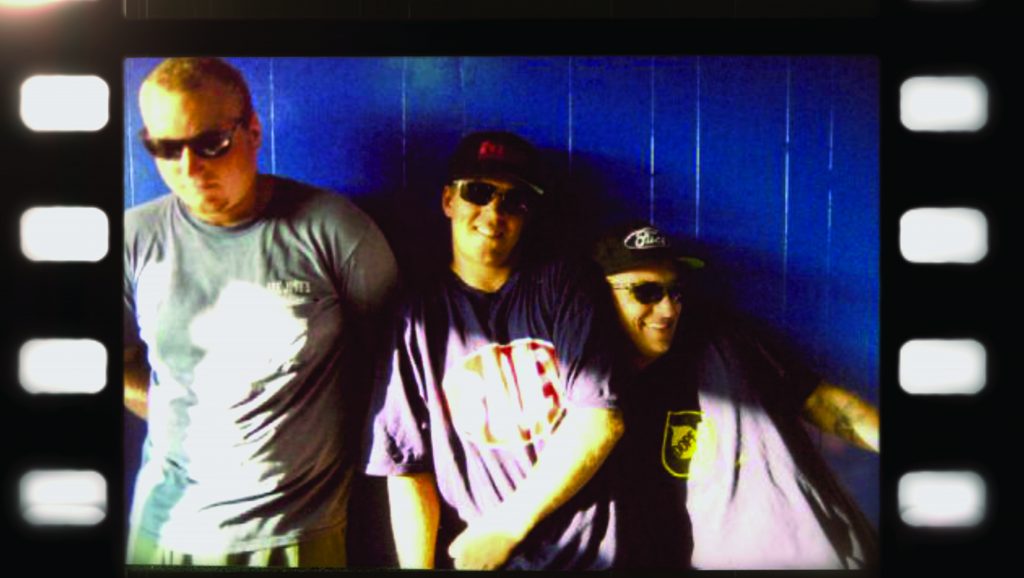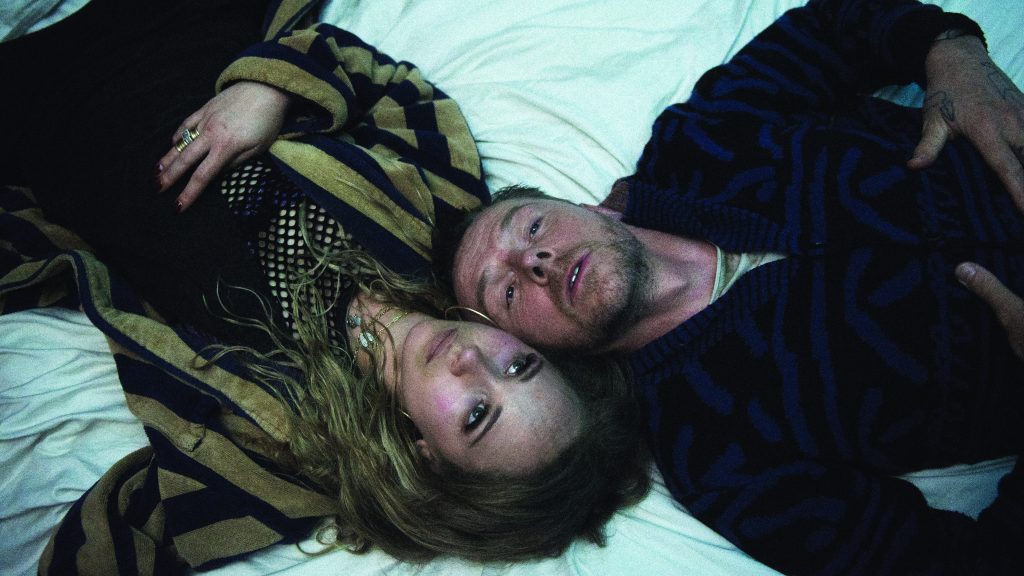April 30, 2019
by Carla Hay

Directed by David Charles Rodrigues
World premiere at the Tribeca Film Festival in New York City on April 29, 2019.
The South is not the only region of the United States to pass anti-LGBTQ laws in recent years, but it’s the area of the U.S. where these laws have become more commonplace at a faster rate. With that in mind, the San Francisco Gay Men’s Chorus (SFGMC) decided to go right to the front lines in the South for the Lavender Pen Tour in October 2017, to reach out to and perform in the conservative communities that have largely supported these laws.
The tour got its name from the lavender pen that San Francisco city supervisor Harvey Milk (the first openly gay candidate elected to a major office in the U.S.) gave to San Francisco mayor George Moscone, who used the pen to sign into a law a landmark gay rights bill in 1977. (Milk and Moscone were tragically murdered by another city supervisor in 1978.) Milk has often been referred to as the patron saint of the SFGMC. The Oakland Interfaith Choir joined forces with SFGMC on the tour, which did 23 shows in five states: Mississippi, Alabama, Tennessee, South Carolina and North Carolina. The tour raised money for LGBTQ causes, and in order to reduce expenses that would decrease the fundraising total, SFGMC members on the tour agreed to pay their own way. Airbnb, which largely funded this documentary, also gave financial assistance.
SFGMC artistic director Dr. Tim Seelig knows these Southern communities all too well. Raised in Alabama in a strict Baptist family, he was a closeted married father who came out as gay at the age of 35. After coming out, his church turned against him, he lost custody of his kids, and he says that his ex-wife and the church went on a vendetta to ruin him financially. Based on the interviews that Seelig gives in this documentary, he still has a lot of emotional scars from this experience. He says, “I hate the church for all the things they did to my family.”
Seelig has been directing LGBTQ choirs ever since coming out as gay, and his current family is SFGMC. He says that the tour is aimed to reduce the fear that homophobic bigots might have of the LGBTQ community, and show that many LGBTQ people care about the same human values as heterosexuals do. Seelig says this type of outreach to anti-LGBTQ communities, although risky, is necessary to advance LGBTQ rights: “We’re not going to get anywhere by just singing to our own people.”
One of the most memorable parts of “Gay Chorus Deep South” is the story of chorus member Jimmy White. He has also had estrangement issues with his conservative Southern family who’ve had difficulty accepting that he’s gay. Jimmy wants his father Jimmy White Sr. to go to the Lavender Pen performance when the tour is in Jimmy’s home state of Mississippi. Jimmy and his father have had a strained relationship where they’ve at times gone for years without speaking to each other.
Jimmy’s stepmother is a little bit more understanding of Jimmy’s sexuality, and she thinks she might be able to convince Jimmy Sr. to go to the concert with her. When Jimmy Jr. reunites with his father and stepmother in their home, it’s an emotional moment for him and the viewers, but the true sign that their relationship might be on the path to healing is if Jimmy Sr. goes to the concert. You’ll have to see the movie to find out if that happens.
One of the things that Seelig did on the tour is visit conservative Christian churches to see if they would host a performance by SFGMC. A few meetings with church leaders are shown in the documentary, and they had mixed results. Some said yes, while others said no. In Alabama, one church looked promising at first, but SFGMC was rejected because, according to Seelig, a homophobic new minister was put in charge of the church by a bishop who wants the state to have more anti-LGBTQ laws. While the tour was in Selma, Alabama, the documentary shows the parallels between the tour and the civil-rights marches that took place in Selma and other parts of Alabama in the 1960s.
Meanwhile, “Gay Chorus Deep South” shows the Lavender Pen Tour getting criticism and praise—and not from people whom you might expect. The leader of a group called Queer South is seen criticizing the tour for having “white paternalistic” intentions. It should be noted that SFGMC is a racially diverse group, but perhaps this criticism is because Seelig and most of the SFGMC leaders are white.
In Tennessee, Seelig is shown doing an in-studio interview at right-wing, conservative, sports-talk radio station WPRT, and he’s pleasantly surprised at how well the interview went. One of the radio hosts says to Seelig that anything with a message of spreading unity through art is “a beautiful thing.” (We’ll never know if all that niceness was authentic or if the hosts were just being polite because they knew they were being filmed for a movie.)
Another standout member of the SFGMC is an African American transgender person named Ashlé, who doesn’t want to be classified as one gender yet but identifies mostly as female. Ashlé talks about how important it was to be fully accepted by SFGMC, because it shows that the group is not for cisgender men only. Overall, the documentary shows SFGMC to be a tight-knit and dedicated group that turns to each other for support, no matter what’s going on in their lives.
North Carolina welcomed the SFGMC with open arms. It was in North Carolina that the movie had one of its best scenes: when family and friends of SFGMC were introduced to each other in a big reunion. There were plenty of tears and hugs in this very emotional gathering. Another heartfelt moment was at a tour stop in South Carolina, where church ladies gave a SFGMC member a quilt as a sign of friendship and acceptance.
Several audience members are interviewed in the documentary. Most were already supportive of the LGBTQ community, but a few admitted that they supported anti-LGBTQ laws, and seeing the SFGMC perform made them think twice about supporting these laws in the future.
As for the performances, they can best be described as memorable, highly energetic and sometimes intentionally amusing, such as a rendition of “I Got You” by a drag queen dressed as Patsy Cline who kept pulling objects out of her dress as she sang the song. Other song highlights in the documentary are “You Have More Friends Than You Know” and “I Ain’t Afraid.” (SFGMC also performed at the Tribeca Film Festival world premiere of “Gay Chorus Deep South.”)
“Gay Chorus Deep South” is the first feature film from director David Charles Rodrigues, who is very talented at telling a story in a cohesive manner without a lot of flashy gimmicks. The movie isn’t heavy-handed in its message. It just shows that this very unique tour demonstrated how the power of music can help heal bigoted rifts that keep people apart and maybe open up more people’s minds to be more accepting of each other.
UPDATE: MTV Documentary Films will release “Gay Chorus Deep South” in Los Angeles on October 30, 2019, in New York City on November 1, 2019, and in San Francisco on November 22, 2019.
https://www.youtube.com/watch?v=oAZIvN3iJms












